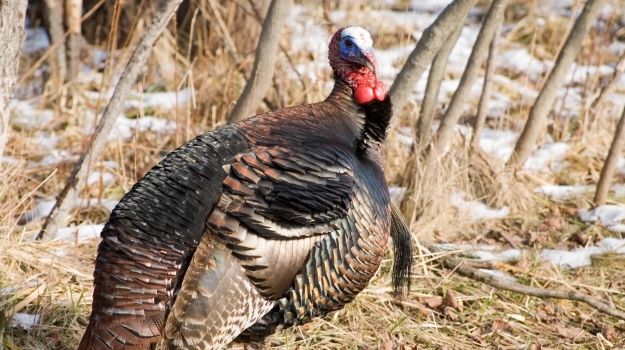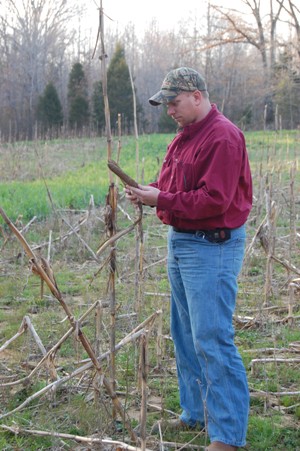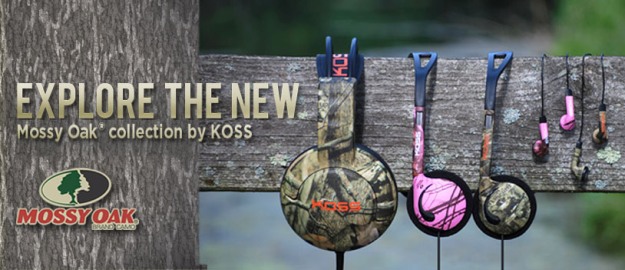
By Kenny Thompson
Hopefully your trophies are at the taxidermist waiting to be mounted, your freezer is full, and you have obtained memories that will last you a lifetime. Most of the hunting seasons have been going on for sometime and are now winding down. All types of wildlife have had too much intrusion in their world and probably need a rest, but they are not the only ones who need a break. Our families, especially our spouses, are ready to secretly lobby for new legislation that limits all hunting seasons to one week. What is a hunter to do? No need to worry, other than watching football, here are some other ideas to get you through these winter months and to help maintain and prepare your hunting properties for the next cycle.
Evaluation
 While you and your hunting buddies sit and talk about what might have been, almost was, and just about did, use this time to evaluate your hunting season. Did you plant in the right spot and plant the right crop? Just because a location looks like a good place to plant a food plot does not mean that it is. Instead of planting a food plot in an area where we want the deer to frequent, we should plant our food plots in areas deer are already using.
While you and your hunting buddies sit and talk about what might have been, almost was, and just about did, use this time to evaluate your hunting season. Did you plant in the right spot and plant the right crop? Just because a location looks like a good place to plant a food plot does not mean that it is. Instead of planting a food plot in an area where we want the deer to frequent, we should plant our food plots in areas deer are already using.
Did you plant enough? This is a good question that will be answered during January, February, and March. Planting food plots is not just about luring a deer out into a field to get a shot. Planting food plots is about improving the quality of your deer herd by ensuring better health. The three months that were previously mentioned maybe the most important months of the year in a whitetails life. These months are the hardest times for a deer due to the weather and the lack of food. If growing big bucks is a priority of yours, this is a critical time for your deer herd. When a buck goes into early summer, his body will need a lot of nutrition to replenish what he lost during the winter months. The more it takes to restore his body, the less that is left for his antler growth. This is why it is very important to have plenty of food available in the winter months to make sure your bucks will realize their maximum antler growth during the summer. Does also benefit from this nutrition and are able to have healthier fawns during their lactation periods.
Did you plant the right forages and mixtures? Many people plant only summer food plots that become dormant after the first couple of frosts and this is no help for the deer during those critical winter months. As you notice the changes that need to be made, begin to make a plan for your next spring and fall plantings. Make sure to give your spring planting plans plenty of thought. For example, if you plan on planting corn in the spring, then realize that if you plant only corn, that it will be no benefit to the deer until fall and winter.
Another important preparation detail is taking all your soil samples now to know the lime and fertilization quantities you will need for your spring planting. Having the right pH levels in your soil is undoubtedly one of the most important parts of the planting process.
Restock
Whether or not there is food remaining from your food plots, one way to increase the levels of nutrition for deer and other wildlife is by supplemental feeding. After deer season is over, putting out your feeders, especially your trough feeders, can be instrumental in having healthier deer. Many people use corn for there supplemental feeding, but there can be flaws in this. Using corn will always attract other wildlife especially raccoons and opossums. A good supplemental feed will provide higher nutrition levels than corn and will also minimize the use by other wildlife. Mixing this supplement with a little amount of corn for the initial attraction is a tip we use. We recommend maintaining these feeders throughout the spring and summer.
A good location for these feeders is near your high travel areas (edges). These areas are also great for mineral licks. We have had better success by using both, BioLogic’s Whitetail Addiction, and Bio-Rock for our mineral supplements. A big mistake a lot of people make is waiting until summer or fall to start or replenish their mineral licks. February is actually the best time to start or replenish these licks. Bucks will immediately start using them when their antlers are shed and they should also be maintained throughout the spring and summer. You should never let these licks become empty during the months of February through September.
Upkeep
Now is the best time for any maintenance on your deer stands. The issue is fresh on your mind and you know what needs to be done. Box stands usually require the most work, but don’t neglect your other stands. If you do not take your hang-on stands down every year we recommend taking the cloth seats off of them to preserve the life of the cloth. Also, I will loosen up my ratchet straps a little to allow for tree growth and then all I will have to do is re-tighten them right before the next hunting season.
This is also a good time to repair any equipment or implements that had breakdowns during the previous year. Repairing these now will ensure your equipment is ready for spring.
If you are fortunate enough to have any fruit trees or orchards on your hunting property, late winter or early spring is a good time to prune them. Pruning trees such as apple trees promotes new growth and increases the overall health of the tree. Only prune tree limbs after extreme cold is gone, cold weather can kill fruit trees with exposed areas left from pruning. Remove old limbs after pruning to decrease the chances of wood eating insects and increase cleaner areas under the trees where wildlife can use for browsing.
Turkey Preparations
Winter is the time to start your spring turkey preparations. Hopefully you have planted BioLogic’s Turkey Gold Chufa on your property from the previous summer and the time to benefit from it is just around the corner. These chufa plots wills definitely be a starting point for your upcoming turkey season. I have never seen any animal attracted to anything like turkeys are to chufa. You need to disk up your entire chufa plot about 10 days before season starts to expose any chufa tubers that are left from the fall and winter. Hopefully you had disked some short strips in your plot back last fall and the turkeys have been using this food source all fall and winter. You are setting the “dinner table” for turkey season with what is left of the chufa tubers. A good note to remember is, if the turkeys have eaten all of the tubers before season starts or if the plot is consumed before season is over, you are not planting enough chufa for the amount of turkeys you have on your property.
Wrap Up
As you put the wraps on this years hunting season don’t forget to spend time in the woods this winter. For the die-hard outdoorsman, we will find any excuse to spend time in the woods. Trapping season usually runs until the end of February in most states and this will allow you to spend more time in the woods and continuously learn more about your property.
Hopefully these ideas will help to ensure healthier wildlife in your hunting areas and better overall hunting. Don’t forget anytime you are in the outdoors keep your eyes open for any sign you may have missed during the season. This is actually one of the best times to scout because the trails are more defined, the leaves are off and terrain changes are easier to see. This is the best time for you to learn the lay of the land. You can key in on buck sign from the previous year to help you plan your ambush for the next season. Bucks that were not shooters this year should be bigger next year and most likely will repeat their pre-rut actions from the year before. You never know, you may find next year’s best hunting spot. As you sit and think about all the memories you made this season don’t fret because God in his infinite wisdom has given us just enough to do until turkey season gets here.



























